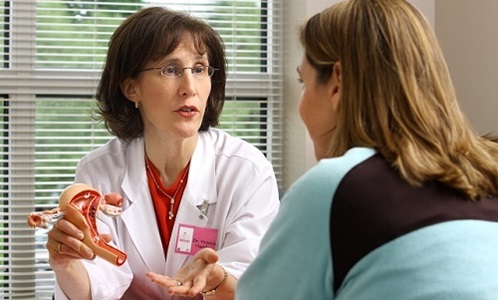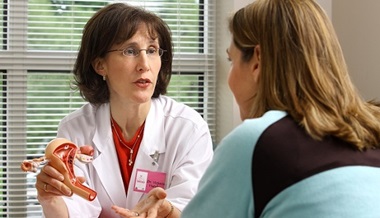Rectocele (Posterior Vaginal Prolapse)
What You Need to Know
- A rectocele, a type of posterior vaginal prolapse, develops when the tissues between the rectum and vagina weaken, causing the rectum to bulge into the vagina.
- Symptoms of a rectocele may include pelvic, vaginal and rectal pressure.
- Factors that may increase your risk of developing a rectocele include giving birth vaginally, age, obesity and chronic constipation.
- Mild cases of rectocele are often improved with nonsurgical therapies, such as bowel training. If symptoms are particularly problematic, your doctor may recommend surgical repair.
What Is a Rectocele?
A rectocele is a type of prolapse where the supportive wall of tissue between a woman’s rectum and vaginal wall weakens. Without the support of these pelvic floor muscles and ligaments, the front wall of the rectum sags and bulges into the vagina, and in severe cases, protrudes out of the vaginal opening.
A rectocele is not the same thing as rectal prolapse. Rectal prolapse is a protrusion or prolapse of the rectum through the anal opening.
Rectocele Causes
Rectocele is caused by prolonged pressure on the pelvic floor. Risk factors for rectocele may include:
- Pregnancy and childbirth, especially repeated vaginal deliveries and/or tearing or episiotomy during delivery
- Aging
- Chronic constipation
- Obesity
- Chronic cough or bronchitis
Rectocele Symptoms
Rectal Pressure
Some women with a rectocele have no symptoms. However, many women experience vaginal pressure, or the feeling that something is falling out of the vagina. Women also often report:
- Rectal pressure or fullness, or the sensation that something is stuck in the rectum
- Difficulty having a bowel movement
- Discomfort during sexual intercourse
- A soft bulge of tissue that can be felt in the vagina (or protrudes outside of the body)
Women with a rectocele may also have a secondary prolapse of the other vaginal walls and nearby organs, including the bladder or uterus.
Rectocele Diagnosis
At your appointment, your doctor will discuss your symptoms and review your medical history with you. The doctor will then perform a physical exam to determine the extent of the rectocele and identify any secondary prolapses, if present. Rarely, imaging tests such as ultrasound or MRI may also be performed.
The Johns Hopkins Women’s Center for Pelvic Health & Reconstructive Surgery

Our team of compassionate urogynecologists uses the latest research and advanced technologies to treat a range of pelvic floor disorders.
Rectocele Treatment
Your doctor will consider the severity of your symptoms to recommend the most appropriate treatment for your rectocele. Mild cases can often be improved with pelvic floor exercises and bowel training. Moderate to severe cases are often treated with a vaginal pessary (a support device inserted into the vagina) or rectocele repair (a minimally invasive surgical procedure).
Rectocele Repair
Your doctor may recommend rectocele repair if other treatment methods have not improved your symptoms. The goal of rectocele repair is to strengthen the wall between the vagina and rectum. In this surgical procedure, the doctor will make an incision into the back wall of the vagina. The layers under the vaginal wall are then sutured together in such a way as to tighten the tissues and reinforce the strength of the wall. Surgical mesh and grafts are not usually used, since research suggests no benefit from these materials.




